2020 | Retrospective
King Vidor: A Very Wide-ranging Director
A conversation with the selection committee of the Retrospective about the motifs and stars, and the techniques and styles of Hollywood director King Vidor (1894 – 1982), whose work is showcased at the 70th Berlinale.

King Vidor during the shooting of Street Scene, New York 1931
King Vidor is impressive even just for his vast volume of work. How many films did he make and over how much time?
King Vidor made 54 narrative films between 1919 and 1959. Only six of those have been lost to posterity. If we count his documentaries and the short two-reelers he made beginning in 1913, it adds up to some 70 films. So his career in narrative filmmaking covered 46 years. And when you take into account the two essay-style films that he made in 1964 and 1980, respectively, he was actively involved in making movies for 67 years. During that time, King Vidor was among the directors who thought in terms of motif, who didn’t pre-define the material, but allowed the material to define the style. On top of that, he was very adventurous. He explored a broad variety of genres; some of them he pushed to the very limits and with some of them he even broke down those limits. King Vidor was a director with a very wide range, so there is a lot to be (re)discovered in his work.
Under what circumstances did King Vidor arrive in Hollywood, where he made his first film in 1919?
King Vidor originally came from Texas. He discovered cinema as a very young man. He left school at 16, and worked at a local movie theatre in his hometown of Galveston as a ticket seller and projectionist. Shortly thereafter, he started shooting short local actuality clips; he even earned some money with them. By 1915, he had already settled in Hollywood with his young wife Florence. She became a successful actor, he started as a scriptwriter. He then directed a series of educational shorts for the Boy City organisation, one of which can be seen as part of the Retrospective: Bud’s Recruit, made in 1918, is the director’s oldest surviving film. After that, he made the transition to directing narratives.
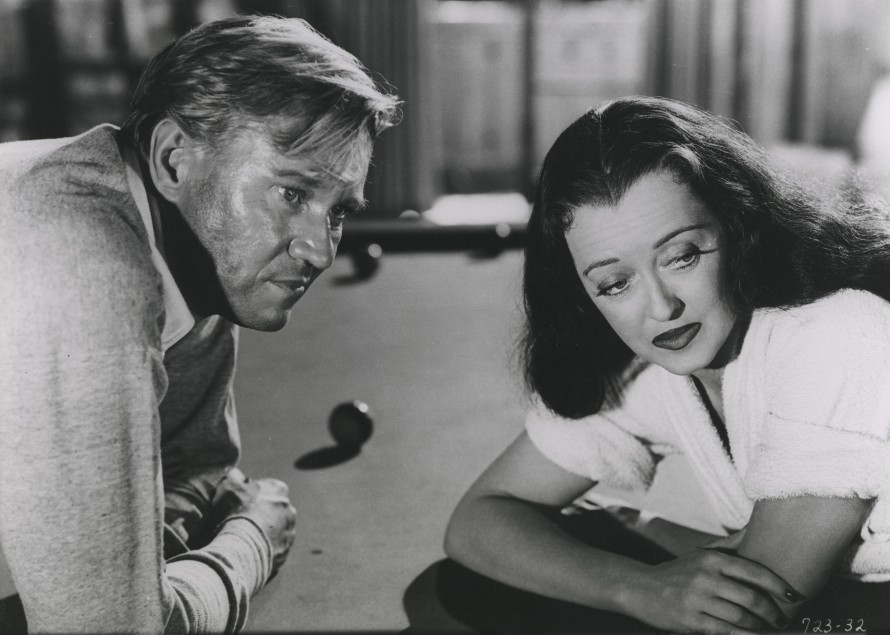
David Brian and Bette Davis in Beyond the Forest
In 1920, Vidor set up his own small studio to produce his films. At the time, he published a kind of manifesto. What did it say? And did he stick to its tenets?
It was called “A Creed and a Pledge”. It covered six points and it’s quite lofty in tone. It was basically a personal commitment to hew to certain principles. He wrote that he believed in films that delivered a message and pledged to make movies that “will help humanity free itself from the shackles of fear”. The creed was filled with idealism; he wrote that he would never “portray anything to cause fright, suggest fear, or glorify mischief” in his films. Vidor would later distance himself from the document, even calling it “stupid” and saying it was done purely for self-promotion. There were definitely some “evil” characters in his later films, although his films were never judgmental about the ruthless behaviour of his main female characters, such as the ones in Beyond the Forest (1949) or Ruby Gentry (1952). Instead, he tried to explore the motivations of that behaviour.
But the manifesto did influence at least some of his early work?
Part of that was also a function of Vidor’s faith. He was a Christian Scientist, although not a particularly devout one. And the creed was somewhat influenced by that faith. Anybody who publishes something like that clearly wants to send a message and, in that sense, Vidor was indeed at times something of an auteur filmmaker. He wrote the screenplays for some of his films; for others the storyline was his. On the other hand, Vidor was directing in an age when the concept of auteur filmmaking didn’t yet exist. Above all, he was a professional director and that’s how he saw himself too. To him, making movies was an obsession, for which you had to sacrifice everything even, in a pinch, your own marital bliss. That speaks of a certain radicalness on the part of the filmmaker, which is sometimes a little frightening.
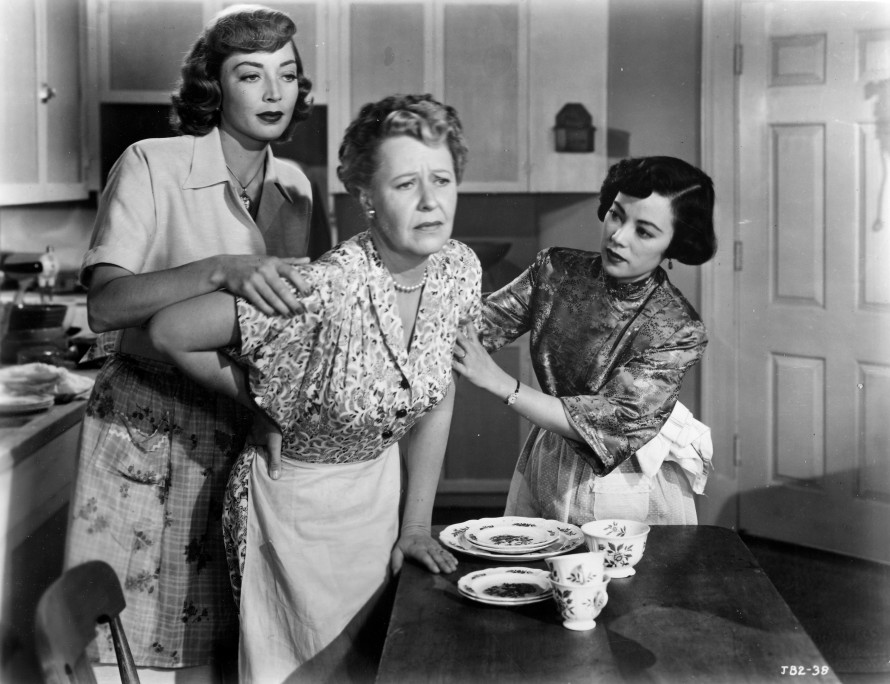
Marie Windsor, Louise Lorimer and Shirley Yamaguchi in Japanese War Bride
But he was certainly more than just a professional director for hire?
Vidor’s status as an auteur is definitely underscored by his independence and by the passion he brought to films. He had to fight for several years to make Hallelujah (1930) exclusively with African-American actors. At that time, it was extremely unusual for a big Hollywood studio like MGM to consider such a move. Vidor also often put his own money into films to make sure they got made – for instance, in Our Daily Bread (1934). And even when some of the scripts were not his, he worked for a long time as a screenwriter, together with his third wife Elizabeth Hill. There is also a whole series of motifs that repeatedly turn up in his films, and which reflect the things he cared about – issues of class, as well as the issue of race in the USA, which he incorporated into his films with a humanist bent. And Japanese War Bride (1952) delivers a clear message condemning racism. There was also no other director working in the studio system at the time who showed the working world so often and in such detail. In addition, Vidor tackled women’s issues early on, for instance in the silent The Real Adventure (1922), about a young wife seeking career recognition and success. And in the omnibus film Wine of Youth (1924), he delivered a nuanced depiction of the marital problems of three consecutive generations of women.
King Vidor garnered an international reputation with two films on subjects that were very topical at the time – the World War I movie The Big Parade (1925) and The Crowd (1928), about modern mass society. What made those films such classics?
The Big Parade (1925) was the first film after the war to come out of America free of the “anti-Hun propaganda” that until then had been prevalent in both America’s politics and its cinema. What Vidor did with his film was develop a model that would become key in many films that were critical of war – a group in danger. It’s about a handful of soldiers who must endure the war – sometimes one of them survives; sometimes none of them do; that paradigm would later inform films such as Westfront 1918 (dir: G. W. Pabst, Germany 1930) and All Quiet on the Western Front (dir: Lewis Milestone, USA 1930). The Big Parade set a precedent for that form of dramatic representation and it was extremely successful.
The Crowd (1928) is a film not only about mass society, but also about the individuals who live and work in it. It is also a closely-observed story of a marriage, which takes a Vidor-esque look at the difference in how society values men and women. The hero is a dreamer and romantic, while his wife shoulders all responsibility for the family. The Crowd is a film that graphically illustrated what “modern times” was all about. Vidor later said it was “the picture that came out of my guts”.
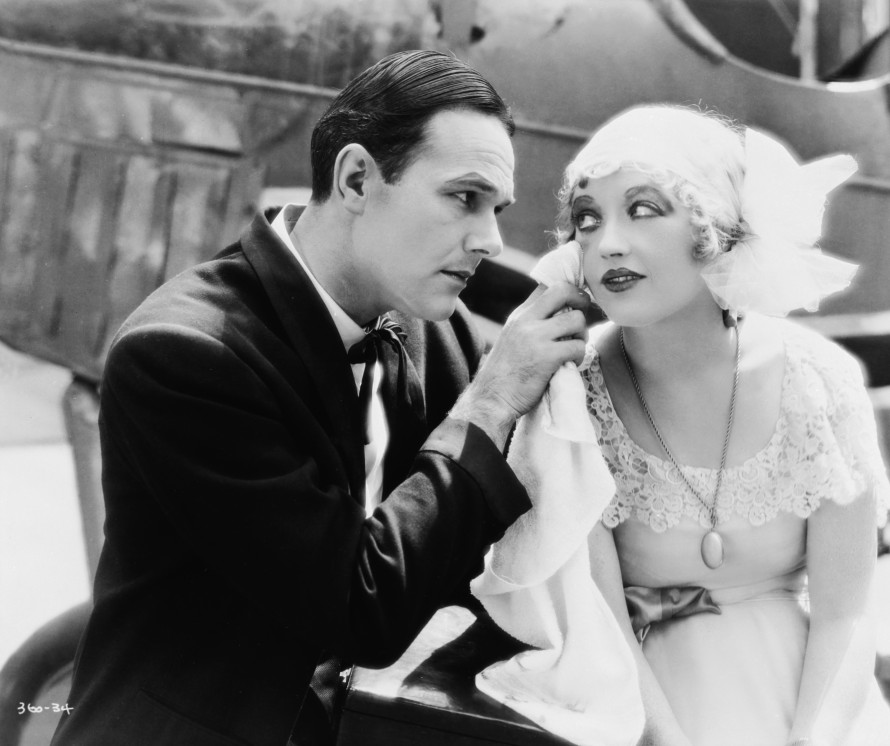
William Haines and Marion Davies in Show People
Something of the specific atmosphere of early Hollywood can certainly be felt in Show People (1928), the film that opens the Retrospective?
In the movie, Marion Davies plays an actress who makes her name in what Gunning called the “cinema of attractions”, where she, in a certain sense, makes films on an “assembly line”. But then she becomes a star and develops a career that goes from small-scale stuff to a big studio, where big budgets are used to tell big stories with big stars. In a way, the film is also a kind of introspection on the part of the director, but told via the story of the female lead – delightfully played by Marion Davies. Ever since Orson Welles’ Citizen Kane (1941) painted a relatively undisguised portrait not only of William Randolph Hearst, but also of an utterly untalented paramour, the career of Marion Davies, who was indeed Hearst’s lover, has been shadowed by the idea that she was not a real artist, but simply a plaything of the newspaper mogul. That is completely undeserved! She was a spectacular comedienne. Vidor could never have made that film without her. A certain self-irony was needed for the role, and she had it. In general, King Vidor was a great “actors’ director”. You often see performances in his films that are absolutely astounding. And often it’s the women who shine – that’s true in La Bohème (1926), of the fantastic Anna Sten in The Wedding Night (1935), Barbara Stanwyck in Stella Dallas (1937), the outstanding Hedy Lamarr in Comrade X (1940) and H. M. Pulham, Esq. (1941), of Bette Davis in Beyond the Forest (1949), and also of Jennifer Jones in Ruby Gentry (1952).
What do we know about his directing style?
Many, many production stills exist from his sets, including a lot of shots in which you see Vidor in very casual clothing. He tends to disappear next to the action that he’s directing. The discreet way he appears makes him seem extraordinarily likeable. He’s standing with his sleeves rolled up next to stars in full make-up and magnificent costumes. He’s just standing there, but making an impression with completely unspectacular gestures that clearly have an impact on the actor. He was the diametric opposite of the puffed-up lion tamer who was always showcasing himself as well as the actors.
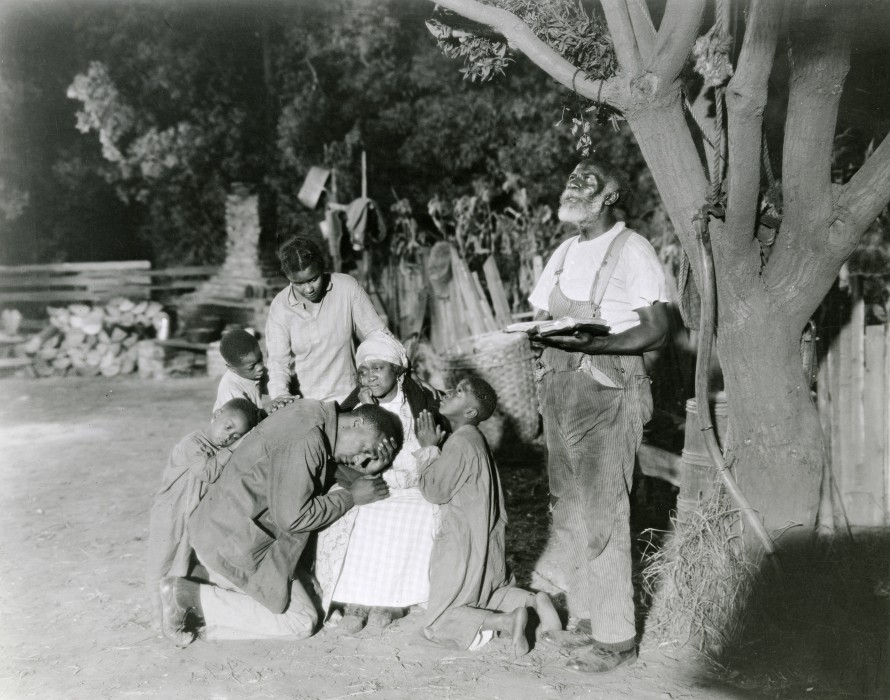
Fanny Belle DeKnight and Harry Gray in Hallelujah
Over the long course of Vidor’s career, there were also rapid technical advances in the film industry. How are they reflected in his films and onscreen at the Berlinale?
King Vidor was always interested in new technical possibilities. Even when he was making silents, he worked with music and a metronome, using their rhythms in his directing. His first talkie, the 1930 Hallelujah, is notable not only for its use of music, but also for the authentic cadence of the Black actors’ dialogue. And in his big city film Street Scene, which he made a year later, he had the residents of the building where the action takes place, who were mostly migrants from a variety of places, speaking in various dialects or accents. So he worked in a very realistic vein, which created an atmosphere and conveyed far more information than the spoken word alone could do. It added another dimension to the characters. And in terms of technical advances, Vidor’s western Billy the Kid was shot widescreen in 1930, and was released in theatres in both 35mm and 70mm. King Vidor was a latecomer to colour cinematography, making his first colour film in 1940 – Northwest Passage. So he wasn’t a pioneer, in that sense, but in his six Technicolor films he worked aggressively, sometimes excessively with colour and imbued it with great significance. Examples include the use of natural colours for the spectacular landscape shots in Northwest Passage, the rather subdued shades in the industrial chronicle An American Romance (1944), the garish colours in the violent melodrama Duel in the Sun (1947), and not least of all the overindulgent colours of the costumes in his late work Solomon and Sheba(1959), which had an almost camp note.
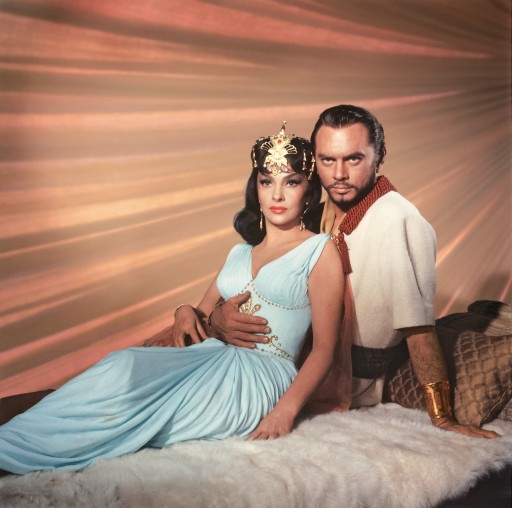
Gina Lollobrigida and Yul Brynner in Solomon and Sheba
That last narrative film of King Vidor’s is considered a failure. What happened?
If you didn’t know this history of the movie’s production, you might think how odd it was that the two leads – Yul Brynner and Gina Lollobrigida – were not performing at their best levels. But why was that? Tyrone Power was originally cast in the role of Solomon. And that was probably one of the reasons King Vidor decided to take on Solomon and Sheba and not Ben Hur, which he had also been offered. The character of Solomon is faced with a dilemma, one that was familiar to both King Vidor and Tyrone Power, who had separated from his wife shortly before shooting began. The central question of the movie is whether you should resist a temptation of the flesh that you really don’t want to resist, because you have sworn your devotion to another – in the case of Solomon, the God Jehovah. It was important to Vidor that Tyrone Power could play that conflict, because it echoed his experience in life. Then Tyrone Power died suddenly during the shoot and was replaced by Yul Brynner. Brynner was not the least bit interested in the ambivalence inherent in the character. He wanted to play “the king” – and that’s what he did; Yul Brynner is the king in every scene in the film. And that meant that the film’s balance was tipped in terribly tragic way. But the movie had other things going for it. They become apparent the minute Yul Brynner is allowed to be the king and goes into battle, or the minute Gina Lollobrigida doesn’t have to compete with him. Then the film works again – right up to the magnificent moment when Sheba decides to sacrifice herself for Solomon.
And King Vidor was done with filmmaking after that?
He collaborated on additional big projects and even wrote a screenplay for a film titled A Man Called Cervantes. But when the producer made changes to his script without consulting him, King Vidor withdrew from the film. Around that time, in the mid-1960s, he talked about how a different kind of filmmaking was now possible. He saw the advent of the auteur film; he was fascinated by Fellini’s 8½. But he also knew that he wasn’t a member of the generation that was making those films. Still, he passed on his experience and his interests in many other ways. He was much sought after for interviews and he taught at film schools – where he encountered attentive students like Martin Scorsese, who would later become one of the young directors with whom he was friends. Martin Scorsese did in fact nurse an enduring relationship to King Vidor’s work. He still admires him. That is evident not least of all in Scorsese’s article in the Retrospective companion book.
Part of what makes the Berlinale Retrospective so effective is the fact that it travels to other locales. Where can we expect to enjoy the benefits of the festival’s commitment to preserving film legacy?
The Retrospective films will be screened at the Munich Filmmuseum and later – in a less comprehensive form – at the Filmhaus in Nuremberg. The series will then be shown at the Filmpodium in Zurich, the Cinémathèque suisse ian Lausanne, and the Film Society of Lincoln Center in New York.